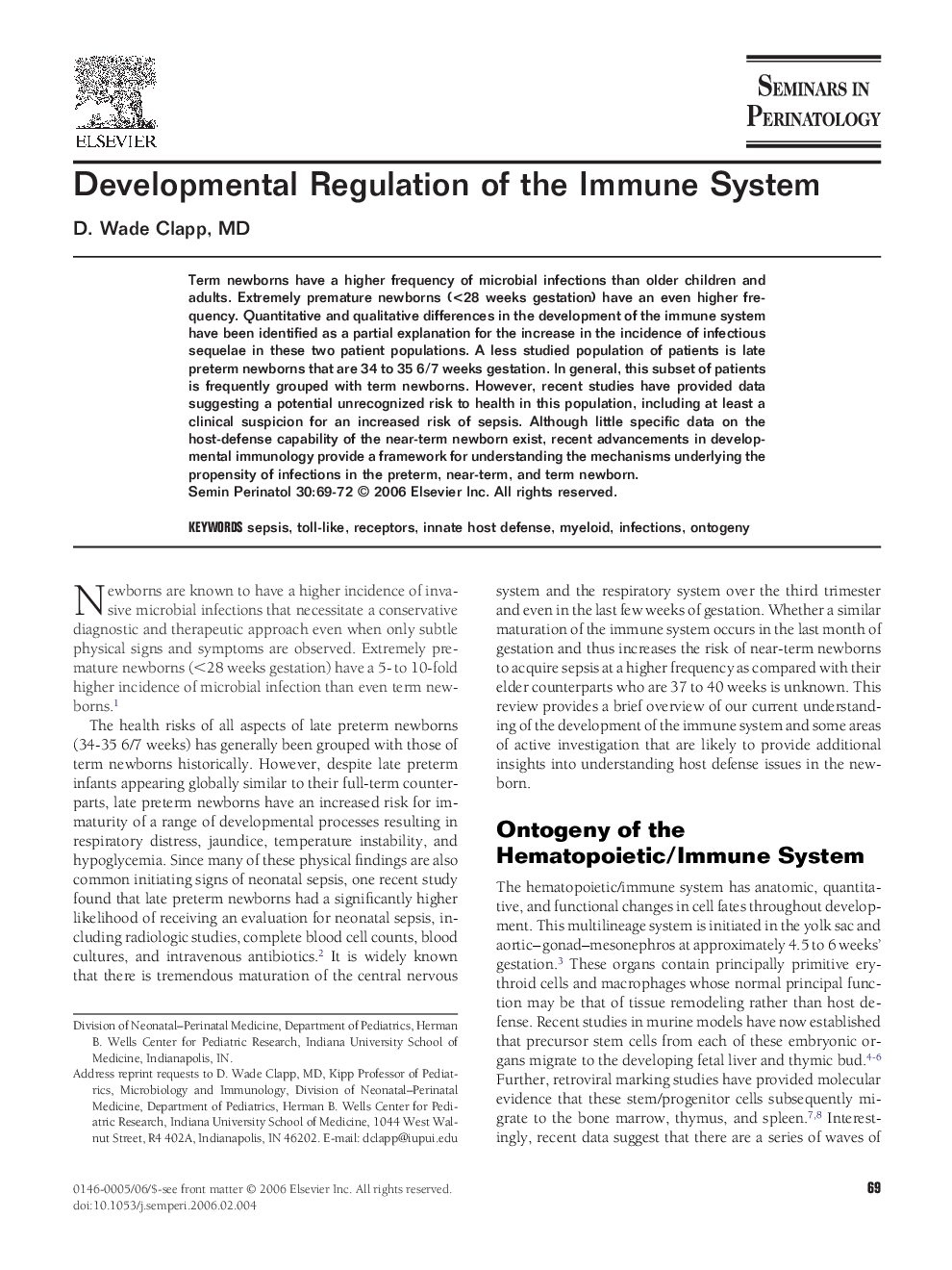| Article ID | Journal | Published Year | Pages | File Type |
|---|---|---|---|---|
| 3836719 | Seminars in Perinatology | 2006 | 4 Pages |
Term newborns have a higher frequency of microbial infections than older children and adults. Extremely premature newborns (<28 weeks gestation) have an even higher frequency. Quantitative and qualitative differences in the development of the immune system have been identified as a partial explanation for the increase in the incidence of infectious sequelae in these two patient populations. A less studied population of patients is late preterm newborns that are 34 to 35 6/7 weeks gestation. In general, this subset of patients is frequently grouped with term newborns. However, recent studies have provided data suggesting a potential unrecognized risk to health in this population, including at least a clinical suspicion for an increased risk of sepsis. Although little specific data on the host-defense capability of the near-term newborn exist, recent advancements in developmental immunology provide a framework for understanding the mechanisms underlying the propensity of infections in the preterm, near-term, and term newborn.
